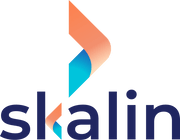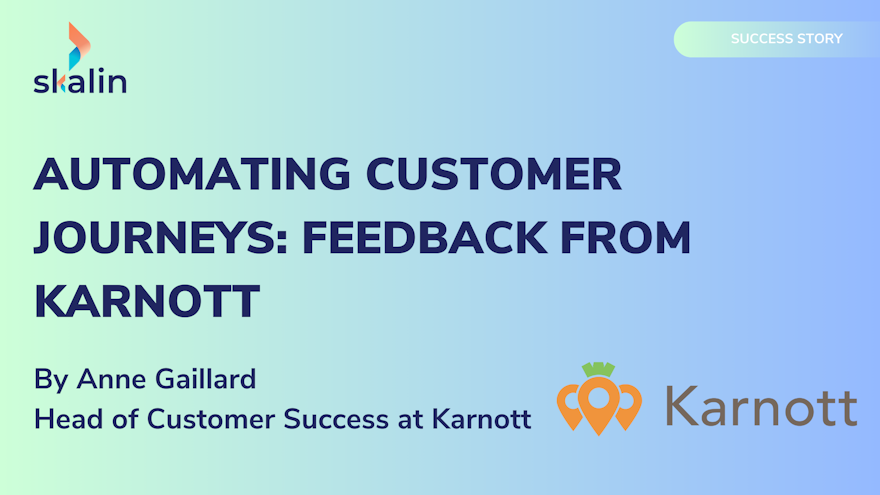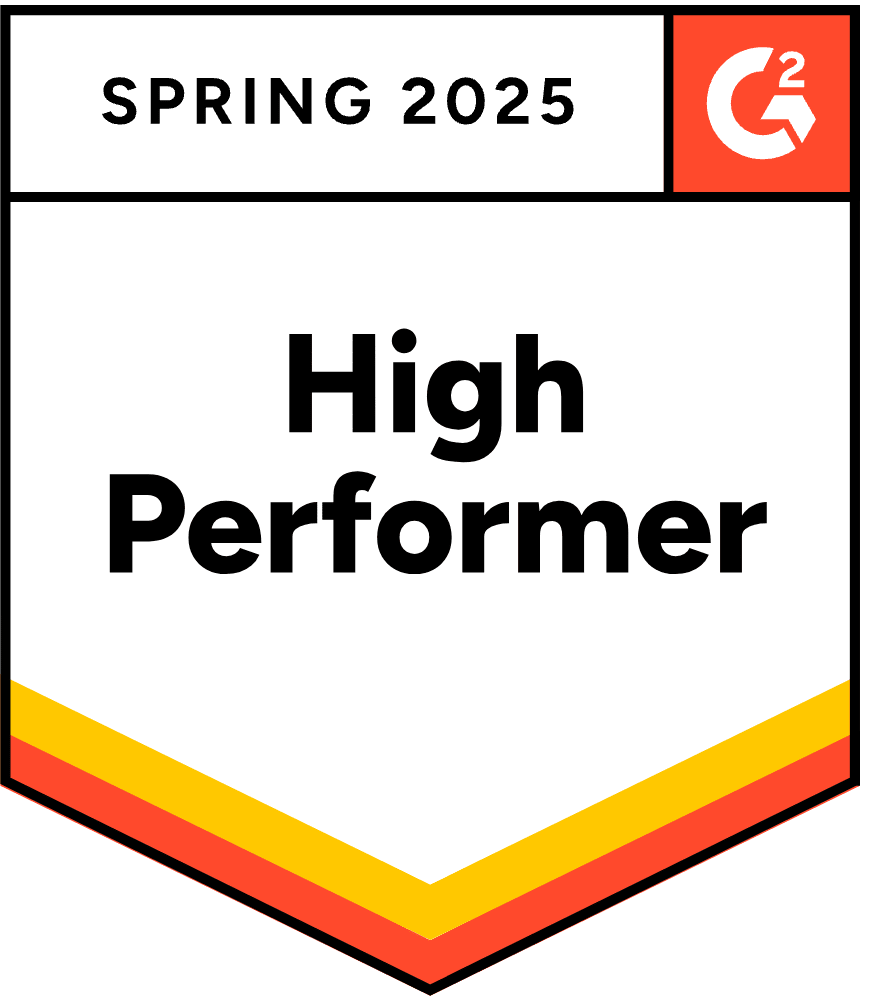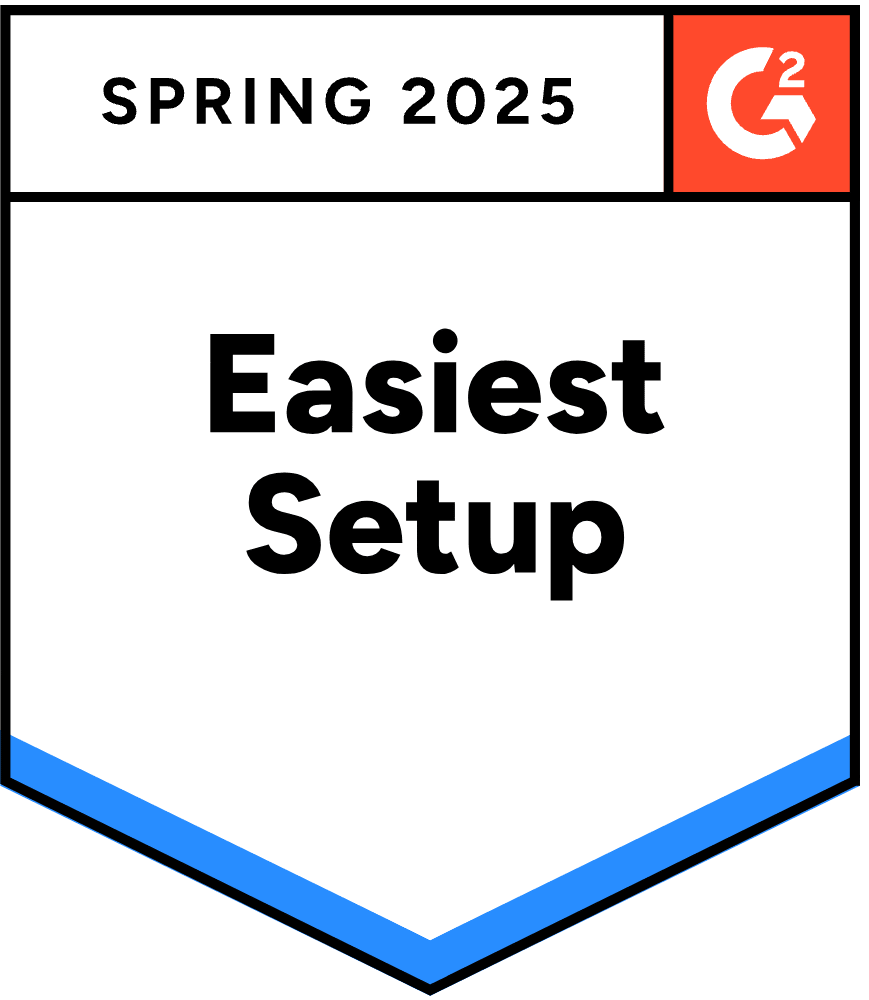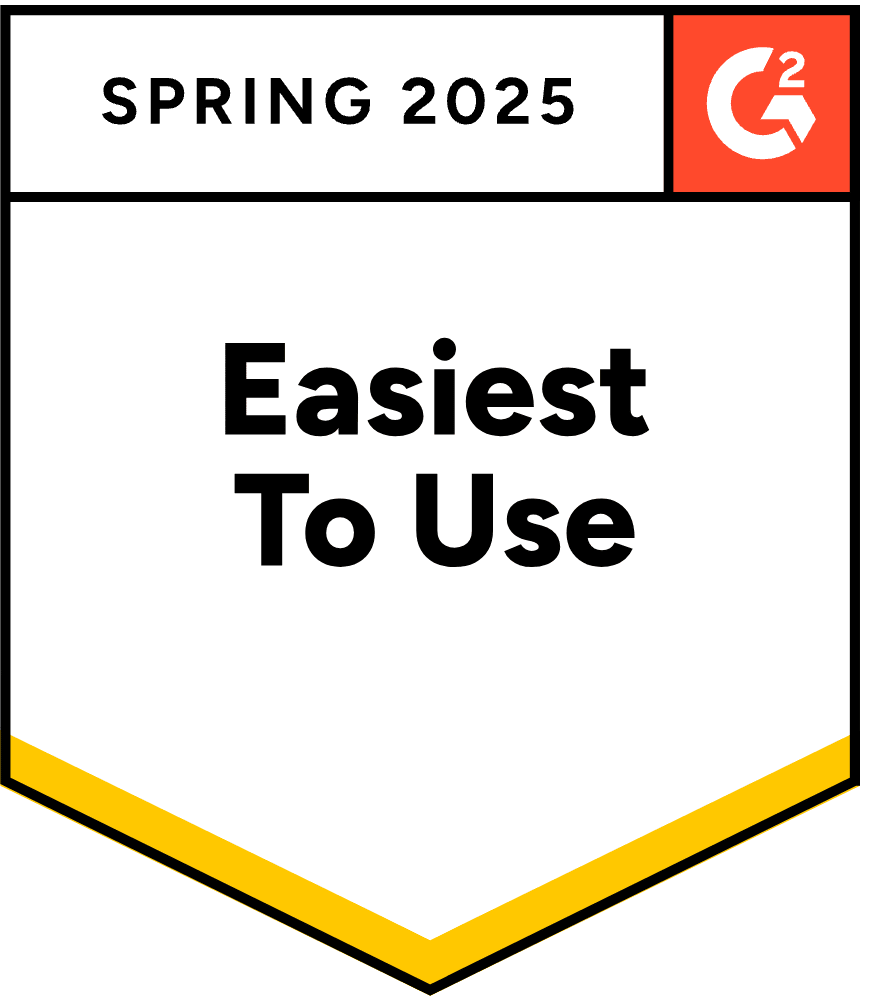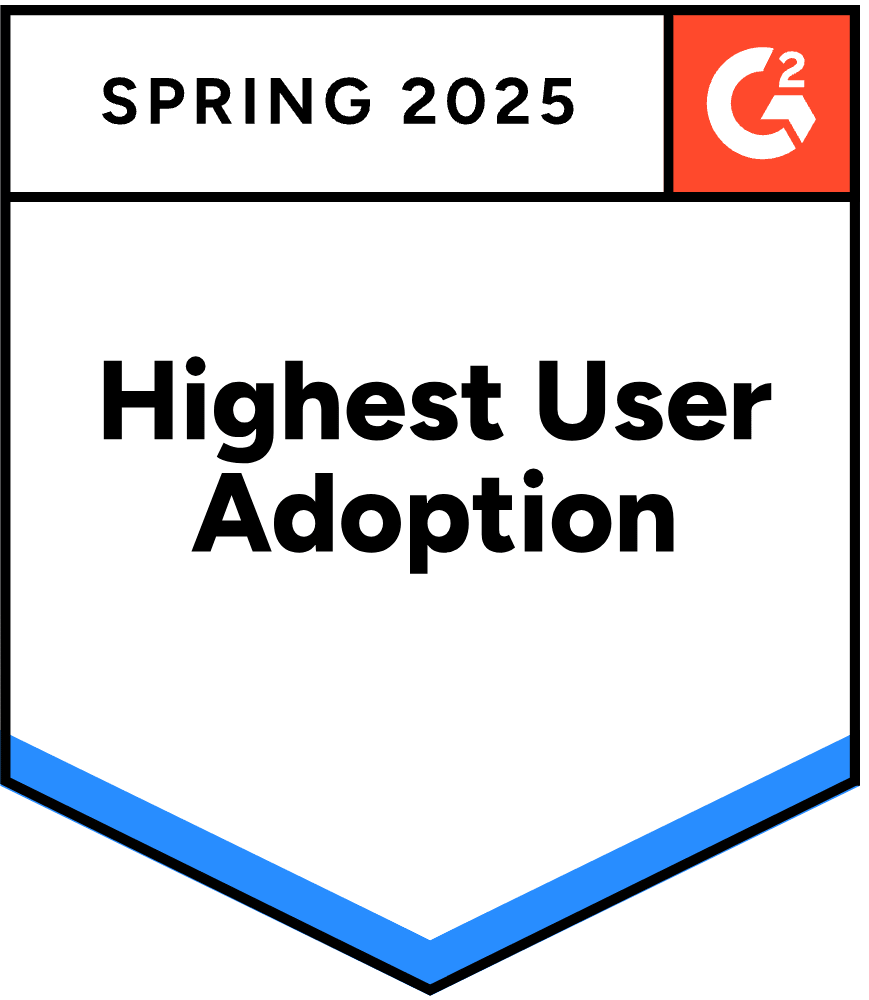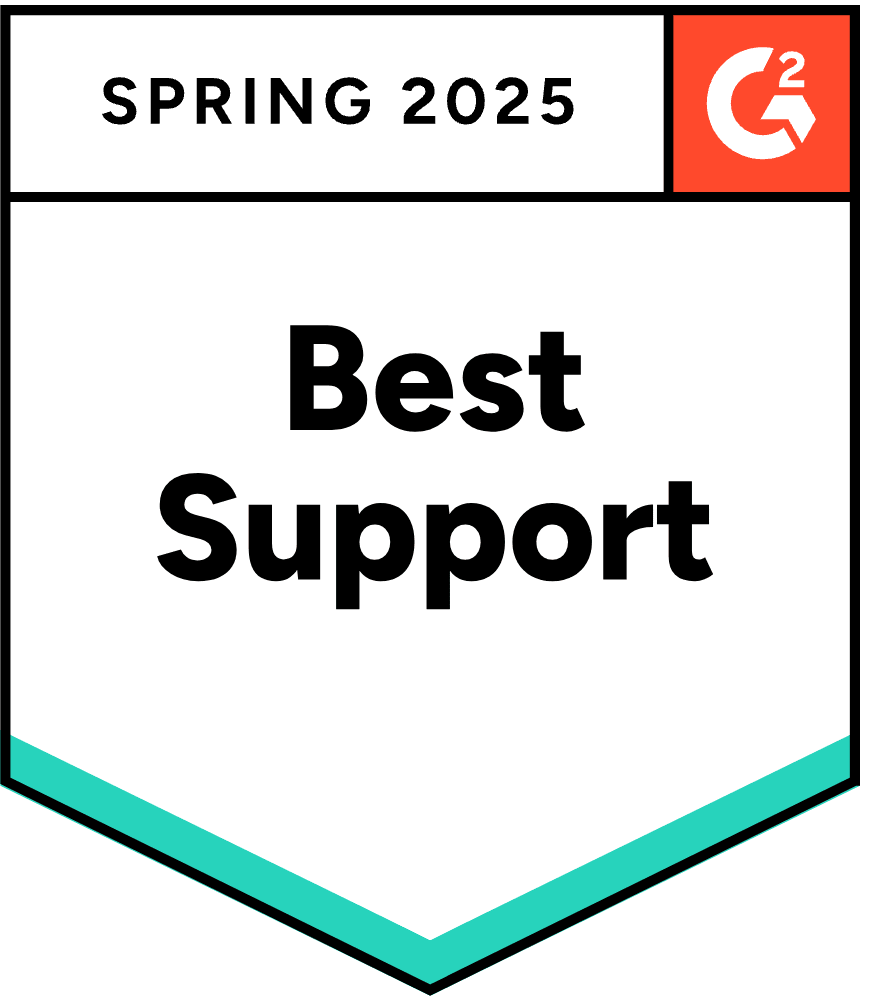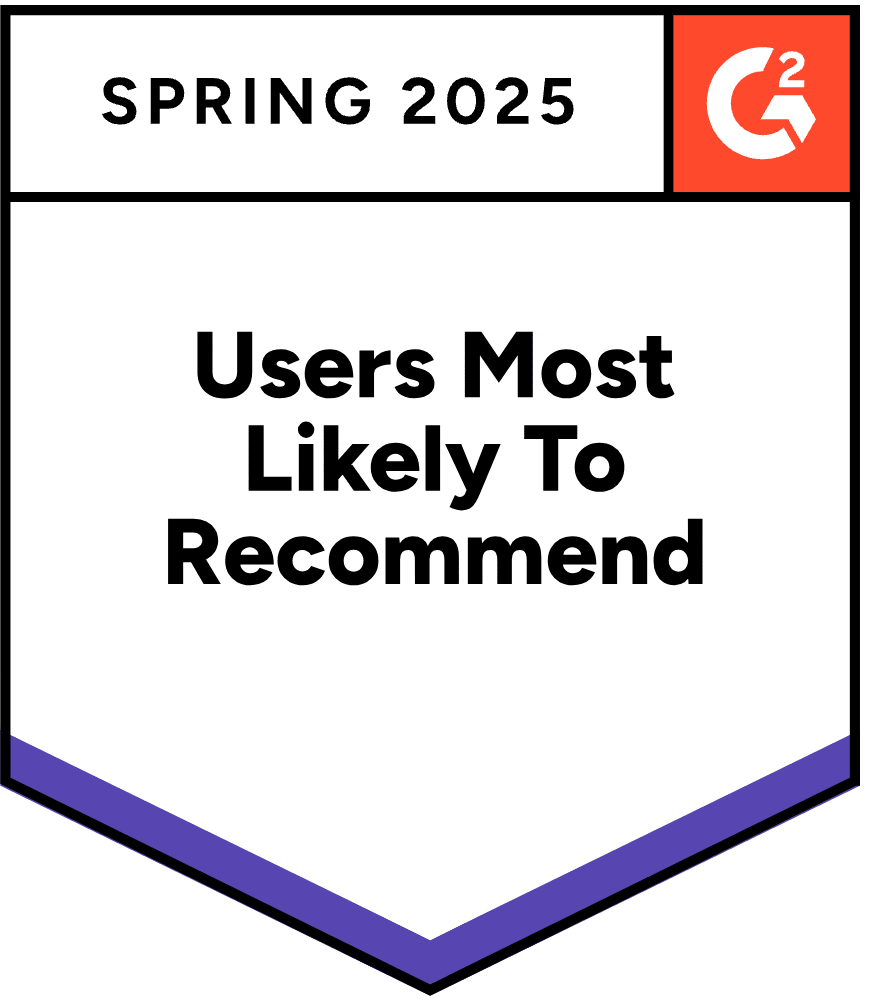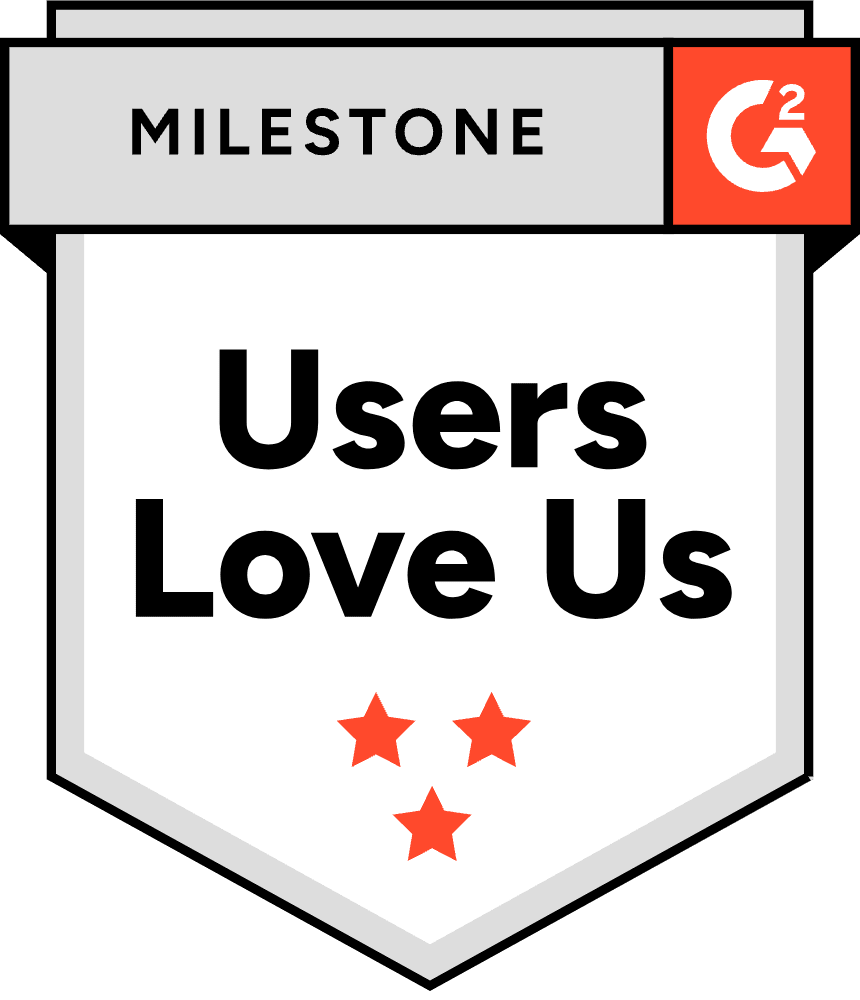In just a few years, Karnott has experienced a remarkable 2.5-fold increase in its customer portfolio, while the size of the Customer Success team has remained largely unchanged. This substantial growth has been facilitated by the implementation of automation in critical processes. However, it's essential to recognise that automation isn't universally applicable, as certain accounts necessitate a more personalised approach. Anne Gaillard from Karnott sheds light on her strategy for categorising customers, ensuring a harmonious blend of automation and personalised interaction.
Could you please introduce yourself and provide a brief overview of Karnott ?
I began my journey with Karnott in March 2018, initially joining as a Customer Success Manager (CSM). Shortly thereafter, I seized the opportunity to establish and lead the Customer Success department, assuming the role of Head of Customer Success. In this capacity, my primary responsibility is to collaboratively devise and refine our customer support strategy. This entails shaping processes, implementing effective tools, enhancing customer communications, leveraging data insights, and fostering the professional development of our team members.
Karnott stands as a pioneering force in the realm of connected agriculture. Our innovative solution empowers farming and wine-growing enterprises to seamlessly monitor all their sites and equipment through automation. Our comprehensive offering comprises both hardware, facilitated by a sophisticated box that precisely tracks equipment positions, and a user-friendly web and mobile platform. Currently, Karnott proudly serves a vast clientele of 1,900 satisfied customers.
How is the Customer Success team structured ?
In August 2018, I initiated the recruitment process for our first CSM, subsequently expanding the team with additional hires. Presently, the team comprises 3 CSMs and 2 support managers, all of whom boast extensive tenure with Karnott.
We've designated one CSM to focus solely on onboarding, facilitating smooth transitions for our new clients. Following onboarding, 2 CSMs assume the role of Account Managers, specialising in particular customer segments. One focuses on the winegrowing sector, while the other caters to the agriculture sector. Additionally, key accounts are evenly distributed between them to ensure comprehensive coverage and personalised attention.
When was the decision made to automate the customer journey ?
When I initially joined, we had around 50 customers. Within six months, our customer base had expanded to approximately 300. During this period, I focused on streamlining our processes and began introducing automation.
- At the outset, we used the tools available to us: an Excel file, a back office system, and HubSpot CRM. Our product team developed buttons on the back office interface to correspond with different stages in the customer lifecycle.
- Subsequently, we implemented dynamic lists in HubSpot to create relatively straightforward workflows. Additionally, we integrated Intercom for in-application communications.
- The culmination of our efforts was the adoption of a Customer Success Platform (CSP). This platform offers a comprehensive 360° view of all our customers, encompassing both raw and behavioral data, serving as a valuable complement to our CRM. It has become an indispensable day-to-day ally, aiding us in proactive customer engagement and effectively replacing the need for 1 or 2 CSMs. Initially, we deployed a first CSP, subsequently replaced by Skalin.
Through the CSP, we leverage automation via Playbooks. A Playbook is an automated workflow triggered by specific conditions. This sequence of actions may include sending emails to customers, assigning tasks to CSMs, or modifying attributes. However, it's crucial to strike a balance, as an excessive number of playbooks can diminish their effectiveness.
How did you structure your Playbooks ?
They cover all stages of the lifecycle :
Onboarding: When they sign a contract, sales representatives input information that is then sent to Skalin through our back-office automatically. For instance, we gather insights into why customers choose Karnott.
Adoption: For instance, when we release a new feature, we provide assistance with its use. We also have a detractor or promoter journey, gamification with quizzes, and support for our hardware equipment.
Expansion: This involves upselling with a plan change or the purchase of additional products.
Churn: We have an offboarding strategy.
Additionally, we've developed a "ghost" stage to track customers who no longer respond or are inactive on the platform but continue to pay their subscription. We've implemented a Playbook to remind them of our presence and provide resources if needed. Another Playbook notifies the CSM when the ghosted client reconnects.
How can Playbooks be effectively established ?
- The initial step is to focus on data, particularly its accuracy and reliability. This data serves as the foundation for segmentation and personalisation, enabling us to deliver digitized and automated support. It's essential to ensure that certain key qualifications are met within the CRM and gather behavioral data on platform usage.
- Next, it's crucial to define all stages in the customer lifecycle.
- Additionally, I recommend aligning teams because initially, Customer Success Managers (CSMs) may be inclined to call customers immediately upon receiving a new order. However, in reality, especially when managing large volumes, this approach may not be optimal. It's important to educate the Customer Success team, sales personnel, and field teams on the most effective strategies.
- Lastly, I propose leveraging a knowledge base to support automation. This could include resources such as a help center, FAQs, or instructional videos. Such resources can serve as valuable tools to complement automation efforts.
You've automated extensively: is there still space for customisation ?
Absolutely! We continue to engage with our customers, but we've opted to move away from relying solely on phone calls. The key distinction lies in our usage of data, segmentation, and targeted approaches, enabling us to personalise communications effectively, even when reaching out to numerous similar customers. There's little benefit in repeating the same message tenfold for a hundred customers.
Furthermore, as a small CS team, we prioritize productivity. Leveraging Playbooks allows us to streamline operations by automating repetitive tasks. The tool essentially acts as a cognitive aid for CSMs, guiding them in understanding why direct calls may not always be necessary, as digital and automated support mechanisms effectively serve our customers' needs.
Automation also assists us in determining the opportune moments to make phone calls, strategically.
How do you distinguish between approaches for various customers ?
We position our CSMs as coaches. Their role isn't to perform tasks for the customer but to empower them for success. This approach initially involves a 'Low Touch' strategy, but we can adjust it or transition to a more 'High Touch' approach based on the user's behavior, potential, and lifecycle stage.
As customers progress to the adoption stage, we classify them into one of three tiers. Tier 1 receives a low-touch approach, while tier 3 benefits from a high-touch approach. Typically, only around 20 to 30 key accounts are designated as tier 3.
We select third-party services based on three criteria: :
- The chosen subscription plan and the quantity of equipment: For instance, if a tier 1 customer with 15 devices purchases an additional 5, they may transition to tier 2.
The specific needs for which the customer has adopted our solution.
The evaluation conducted by the CSM, considering the customer's growth potential.
How can we ensure that emails are adequately personalised ?
Customer segmentation is key to eliminating the impersonal effect. For instance, when I identify customers in the expansion phase, using the Pro package and seeking assistance with invoicing, I ensure that the message resonates appropriately. This targeted approach signals to the customer that we've accurately understood their specific needs.
Moreover, several elements contribute to creating the impression of ultra-personalisation, even when emails are sent to a large number of users. Emails are dispatched from the inbox of the designated coach and bear their signature. Additionally, we include the coach's mobile number and use the pronoun 'I', maintain an informal tone, and incorporate emojis. Furthermore, we're integrating video content to inject a human touch into our communications.
Which indicators do you use to track customer satisfaction ?
We primarily analyse opening rates, click-through rates, and drop-out rates during product rounds to gauge customer satisfaction.
Regarding onboarding success, we assess specific criteria. Since we provide self-guided training, it's crucial that customers utilize tutorial videos to configure their accounts. We also evaluate the application's configuration and the product's intuitiveness.
Furthermore, upon completing onboarding, we solicit feedback from customers regarding the clarity of explanations using the NPS. In instances where some customers do not engage with the email or drop out, human intervention becomes essential.
How would you evaluate the implementation of Skalin ?
I'm already witnessing the impact of Skalin. Its AI capabilities analyze my data to generate pertinent health reports and even provide predictive insights. Skalin automatically notifies my Customer Success Managers (CSMs) of potential drop-out scenarios. The primary objective now is to reduce our churn rate, and I'm eager to monitor its evolution over time.
Skalin aims to direct my teams' attention toward high-potential customers that we can't afford to lose. Prioritisation becomes crucial in such situations: if suddenly faced with 300 potential drop-outs, it's imperative to identify and focus efforts on the most critical accounts.
